#Enrico Fermi
Text

I've been watching him for my entire life
I hate the air he breathes, his foolish decrees
His words so contrived
And I'd be lying if I said I wasn't wishing
For untimely death or demise
Or am I just wishing I could be like you?
[That the people would see me too as a poet
And not just the muse]
Oh, it's not true, I don't wish harm upon you
May the gods strike me down if I forsake you
Frater meus, [you're beautifully made
And to you I'm forever grateful]
But why do I lie awake each night thinking
"Instead of you, it should be me"?
Please know my actions are not motivated only by envy
I, too, have a destiny
This death will be art
The people will speak of this day from near and afar
This event will be history, and I'll be great too
I don't want what you have, I want to be you
My name is Brutus, but the people will call me Rex
[Buttress - Brutus]
"[...]Enrico was the most qualified person and the leading candidate to inherit the title of Vongola Decimo before he was shot and killed[...]." [KHR wiki, list of minor characters]
have you guys ever been 13 to 16 lol. was that fucked up or what
#*shifts the canon around a little to make it fit my delusions and visions* okay#also im not sorry im appropriating Enrico as my OC at this point#khr enrico fermi#enrico fermi#khr#katekyo hitman reborn#xanxus#khr xanxus#brutus is SOO potent for xanxus btw i have so much more art planned#lowkey wanted to push my trans XX agenda#with the ''of humble origins and born of the cursed sex'' line but didnt add it#keeping it kinda with the muse line though#also: his gun too big for his baby hands. much to think abt. he will grow into it
50 notes
·
View notes
Text
You watched Christopher Nolan's "Oppenheimer" and now want to learn more about some of the scientists that were involved and the history of the Manhattan Project? Then I recommend "Pandora's Keepers" by Brian VanDeMark. The book takes a closer look at not just J. Robert Oppenheimer, but also Hans Bethe, Niels Bohr, Arthur Compton, Enrico Fermi, Ernest Lawrence, Isidor Isaac Rabi, Leo Szilard and Edward Teller. The book is a history book more so than a science book, most of the scientific explanations mentioned around the making of the bomb, aren't too complex to understand for readers who aren't experts on the matter.
#physics#oppenheimer movie#oppenheimer#nuclear physics#quantum physics#particle physics#hans bethe#niels bohr#edward teller#enrico fermi#leo szilard#ernest lawrence#arthur compton#isidor rabi#pandora's keepers#history#manhattan project
16 notes
·
View notes
Text
On This Day In History
September 29th, 1901: Enrico Fermi, Italian-American physicist and Nobel Prize laureate, is born. He is perhaps best known for Fermi's paradox, the paradox between the lack of evidence of alien life and high probability that alien life exists. There have been many theories attempting to resolve this paradox.
186 notes
·
View notes
Text
'Christopher Nolan's blockbuster Oppenheimer introduces audiences to nuclear physicist David Hill (Rami Malek), but doesn't tell his whole story. In addition to J. Robert Oppenheimer (Cillian Murphy), the film features several prominent scientists who worked on the Manhattan Project including Hill, Edward Teller (Benny Safdie), Isidor Isaac Rabi (David Krumholtz), and Ernest Lawrence (Josh Hartnett). Nolan's narrative takes viewers through the development of nuclear weapons followed by the personal and political fallout from their deployment in World War II.
David Hill plays a major role in closing out Oppenheimer, featuring prominently during the Senate confirmation hearing for Lewis Strauss (Robert Downey Jr.) as secretary of commerce. Malek delivers a powerful performance in the testimony scenes as his character Hill exposes Strauss' betrayal of Oppenheimer. An otherwise minor role becomes a turning point in establishing Strauss as the villain of the film and rallying audience support for Oppenheimer against the charges he is a communist. Given what transpired leading up to Strauss' hearing, it's unsurprising what happened to Hill after the events of Oppenheimer.
What Happened To David Hill After Lewis Strauss' Senate Hearing
Lewis Strauss' Senate hearing concluded in 1959 with the Atomic Energy Commission member failing to receive enough votes for confirmation. Following his influential testimony against Strauss, David Hill moved into the private sector. However, he remained closely associated with the work he did alongside J. Robert Oppenheimer and the Manhattan Project. Hill joined a group from the Met Lab at the University of Chicago to examine the social and political fallout of the nuclear bomb.
Hill's later career included founding, developing, and leading multiple scientific research firms. He was head of Nanosecond Systems Inc. from 1963 to 1972. The company manufactured high-precision measuring equipment. Hill also spent 30 years as president of the patent enforcement and investment company Harbor Research Corp. The accomplished nuclear physicist also served as a fellow for the American Physical Society and the American Association for the Advancement of Science.
David Hill Died In 2008
David Hill died on December 14, 2008, in Brighton, New York. He was 89 years old. Hill was predeceased by his wife, Mary Shadow, who passed away in 1992. The couple had been married since 1950 and had seven children together. All seven children survived Hill along with 14 grandchildren and his companion at the time, Sharon Vincent.
Hill's obituary notes he was a renowned nuclear physicist and acknowledges his collaboration with Enrico Fermi in building the first nuclear chain reactor. There is no mention of the Manhattan Project, his work with J. Robert Oppenheimer, or his impact on American politics. It's another indication that Hill wanted to distance himself from the events of Oppenheimer and continue a less politicized career in science.'
#Oppenheimer#David Hill#Rami Malek#Cillian Murphy#Benny Safdie#Edward Teller#David Krumholtz#Isidor Issac Rabi#Ernest Lawrence#Josh Hartnett#Enrico Fermi#Lewis Strauss#Robert Downey Jr.#Nanosecond Systems Inc#The Manhattan Project#American Physical Society#American Association for the Advancement of Science
19 notes
·
View notes
Text
"There are two possible outcomes: If the result confirms the hypothesis, then you've made a measurement. If the result is contrary to the hypothesis, then you've made a discovery."
Enrico Fermi, physicist and Nobel laureate (29th September 1901-1954)
4 notes
·
View notes
Text
Described as “a commemorative two–record album on the life and times of Enrico Fermi”, this program was produced at Argonne National Laboratory, very likely in the early 1970s. It appears there may have been an accompanying film as well. In addition to familiar voices from other USAEC records, such as Herbert Anderson, Arthur Holly Compton, and Crawford Greenewalt, the great physicist’s wife Laura is heard from. Script by James Chimbidis, drawing heavily from Atoms in the Family by Laura Fermi, Enrico Fermi, Physicist by Emilio Segrè, and The First Pile by Corbin Allardice and Edward Trapnell ; narration by Jay Andre.
Recording of first two sides (MP3, 192 kbps, 80 MB)
Recording of second two sides (MP3, 192 kbps, 80 MB)
2 notes
·
View notes
Text

Happy deathday to Enrico Fermi. I had to break it to him that the only reason extraterrestrials did not make contact with you is because you were never that important enough to contact to begin with
#happy death day#enrico fermi#fermi's paradox#it's a physics joke#or a physicist joke?#I'm not sure#extraterrestrial#extraterrestial life
3 notes
·
View notes
Photo

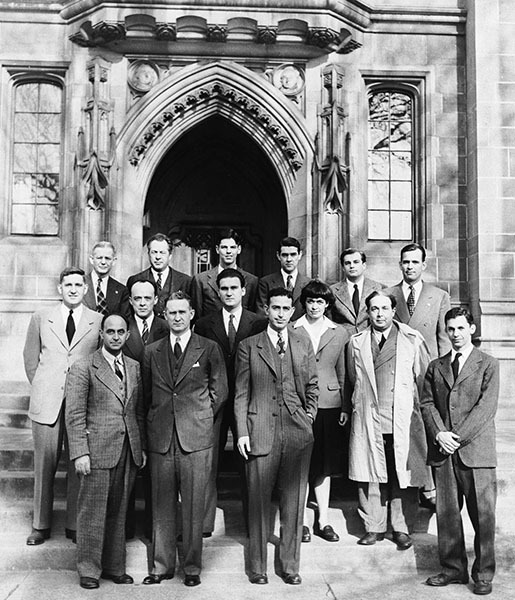



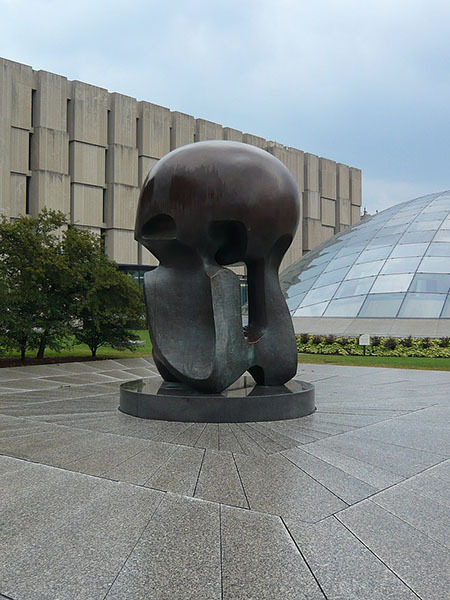
Chicago Pile 1 (CP-1) – Scientist of the Day
Exactly 80 years ago today, on Dec. 2, 1942, at precisely 3:25 PM, the final control rod was removed from a pile of graphite blocks laced with uranium, hidden beneath the stands of old Stagg Field at the University of Chicago, and the world’s first man-made, self-sustained nuclear reaction began.
read more...
#Chicago Pile 1#CP-1#Enrico Fermi#Manhattan project#histsci#histSTM#20th century#history of science#Ashworth#Scientist of the Day
18 notes
·
View notes
Text
I am become Death, the Destroyer of Worlds
Author’s Note: This is my review of Oppenheimer (2023) dir. Christopher Nolan. I would warn for spoilers except this movie is HISTORY so I’m not going to apologize if it EDUCATES you. On the other hand, I prefer to let Nolan direct your journey and not me, so it shouldn’t hurt to read this before you watch the movie. I may keep adding to this review as and when new things occur to me, so check…
View On WordPress
#albert einstein#America#atomic bomb#christopher nolan#cillian murphy#cold war#communism#consequentialism#critic#emily blunt#enrico fermi#fascism#film#florence pugh#hollywood#letterboxd#matt damon#max born#military history#morality#movie#niels bohr#nuclear weapons#oppenheimer#oscars#physics#politics#prometheus#richard feynman#robert downey jr
3 notes
·
View notes
Text
It stated:
The fact that no limits exist to the destructiveness of this weapon makes its very existence and the knowledge of its construction a danger to humanity as a whole. It is necessarily an evil thing considered in any light. For these reasons we believe it important for the President of the United States to tell the American public and the world that we think it wrong on fundamental ethical principles to initiate the development of such a weapon.
"Brighter than a Thousand Suns: A Personal History of the Atomic Scientists" - Robert Jungk, translated by James Cleugh
#book quotes#brighter than a thousand suns#robert jungk#james cleugh#nonfiction#isidor isaac rabi#enrico fermi#hydrogen bomb#american president#america#ethics#weapon development#nuclear weapons
2 notes
·
View notes
Text
They felt themselves caught in a vast machinery and they certainly were inadequately informed as to the true political and strategic situation.†
† General Groves states that he, too, had not been told of the Japanese peace feelers. The State Department, on the other hand, though it knew every detail of the action taken by Tokyo in this connexion, had been given not the slightest warning of the imminent use of the new weapon.
"Brighter than a Thousand Suns: A Personal History of the Atomic Scientists" - Robert Jungk, translated by James Cleugh
#book quote#brighter than a thousand suns#robert jungk#james cleugh#nonfiction#committee#panel#j robert oppenheimer#enrico fermi#arthur h compton#ernest o lawrence#caught up#vast machinery#inadequate#information#truth#politics#strategy#leslie richard groves#japan#peace#state department#tokyo
2 notes
·
View notes
Photo

Did you know: On 2 December 1942, the first human-made self-sustaining nuclear chain reaction was initiated in CP-1, during an experiment led by Enrico Fermi.
#nuclear science#nuclear reactions#nuclear chain reaction#enrico fermi#science#science history#on this day#on this day in science history
7 notes
·
View notes
Photo

2 notes
·
View notes
Text
'The new blockbuster film on Oppenheimer has brought back the memories of the first nuclear bomb dropped on Hiroshima. It has raised complex questions on the nature of the society that permitted such bombs to be developed and used and the stockpiling of nuclear arsenals that can destroy the world many times over. Did the infamous McCarthy era and hunting for reds everywhere have any relationship with the pathology of a society that suppressed its guilt over the bombing of Hiroshima and Nagasaki, substituting it instead with a belief in its exceptionalism? What explains the transformation of Oppenheimer, who had emerged as the “hero” of the Manhattan Project that built the atomic bomb, to a villain and then forgotten?
I remember my first encounter with American guilt over the two atom bombs dropped on Japan. I was attending a conference on distributed computer controls in Monterey, California, in 1985, and our hosts were the Lawrence Livermore Laboratories. This was the weapons laboratory that had developed the hydrogen bomb. During dinner, the wife of one of the nuclear scientists asked the Japanese professor at the table if the Japanese understood why the Americans had to drop the bomb on Japan. That it saved a million lives of American soldiers? And many more Japanese? Was she looking for absolution for the guilt that all Americans carried? Or was she seeking confirmation that what she had been told and believed was the truth? That this belief was shared even by the victims of the bomb?
This is not about the Oppenheimer film; I am only using it as a peg to talk about why the atomic bomb represented multiple ruptures in society. Not just at the level of war, where this new weapon changed the parameters of war completely. But also the recognition in society that science was no longer the concern of the scientists alone but of all of us. For scientists, it also became a question that what they did in the laboratories had real-world consequences, including the possible destruction of humanity itself. It also brought home that this was a new era, the era of big science that needed mega bucks!
Strangely enough, two of the foremost names of scientists at the core of the anti-nuclear bomb movement after the war also had a major role in initiating the Manhattan Project. Leo Szilard, a Hungarian scientist who had become a refugee in England first and then in the United States, sought Einstein’s help in petitioning President Roosevelt for the United States to build the bomb. He was afraid that if Nazi Germany built it first, it would conquer the world. Szilard joined the Manhattan Project, though he was located not in Los Alamos but in the University of Chicago’s Metallurgical Laboratories. Szilard also campaigned within the Manhattan Project for a demonstration of the bomb before its use on Japan. Einstein also tried to reach President Roosevelt with his appeal against the use of the bomb. But Roosevelt died, with Einstein’s letter unopened on his desk. He was replaced by Vice-President Truman, who thought that the bomb would give the United States a nuclear monopoly, therefore, help subjugate the Soviet Union in the post-War scenario.
Turning to the Manhattan Project. It is the scale of the project that was staggering, even by today’s standards. At its peak, it had employed 125,000 people directly, and if we include the many other industries who were either directly or indirectly produced parts or equipment for the bomb, the number would be close to half a million. The costs again were huge, $2 billion in 1945 (around $30-50 billion today). The scientists were an elite group that included Hans Bethe, Enrico Fermi, Nils Bohr, James Franck, Oppenheimer, Edward Teller (the villain of the story later), Richard Feynman, Harold Urey, Klaus Fuchs (who shared atomic secrets with the Soviets) and many more glittering names. More than two dozen Nobel prize winners were associated with the Manhattan Project in various capacities.
But science was only a small part of the project. The Manhattan Project wanted to build two kinds of bombs: one using uranium 235 isotope and the other plutonium. How do we separate fissile material, U 235, from U 238? How do we concentrate weapons grade plutonium? How to do both at an industrial scale? How do we set up the chain reaction to create fission, bringing sub-critical fissile material together to create a critical mass? All these required metallurgists, chemists, engineers, explosive experts, and the fabrication of completely new plants and equipment spread over hundreds of sites. All of it is to be done at record speeds. This was a science “experiment” being done, not at a laboratory scale, but on an industrial scale. That is why the huge budget and the size of the human power involved.
The U.S. government convinced their citizens that Hiroshima, and three days after that, the Nagasaki bombings led to the surrender of Japan. Based on archival and other evidence, it is clear that more than the nuclear bombs, the Soviet Union declaring war against Japan was what led to its surrender. They have also shown that the number of “one million American lives saved” due to Hiroshima and Nagasaki, as it avoided an invasion of Japan, had no basis. It was a number created entirely for propaganda purposes.
While the American people were given these figures as serious calculations, what was completely censored were the actual pictures of the victims of the two bombs. The only picture available of the Hiroshima bombing—the mushroom cloud—was the one taken by the gunner of Enola Gay. Even when a few photographs of Hiroshima and Nagasaki were released months after the nuclear bombings, they were only of shattered buildings, none of actual human beings.
The United States, basking in their victory over Japan, did not want it to be marred by the visuals of the horror of the nuclear bomb. The United States dismissed people dying of a mysterious disease, what the United States knew was radiation sickness, as propaganda by the Japanese. To quote General Leslie Groves who led the Manhattan Project, these were “Tokyo Tales”. It took seven years for the human toll to be visible, and only after the United States ceased its occupation of Japan. Even this was only a few pictures, as Japan was still cooperating with the United States in the hushing up of the horror of the nuclear bomb. The full visual account of what happened in Hiroshima had to wait till the sixties: the pictures of people vaporized leaving only an image on the stone on which they were sitting, survivors with skin hanging from their bodies, people dying of radiation sickness.
The other part of the nuclear bomb was the role of the scientists. They became the heroes who had shortened the war and saved one million American lives. In this myth making, the nuclear bomb was converted from a major industrial scale effort to a secret formula discovered by a few physicists which gave the United States enormous power in the Post War era. This was what made Oppenheimer a hero for the American people. He symbolized the scientific community and its godlike powers. And also the target for people like Teller, who later on combined with others to bring Oppenheimer down.
But if Oppenheimer was a hero just a few years back, how did they succeed in pulling him down?
It is difficult to imagine that the United States had a strong left movement before the 2nd World War. Apart from the presence of the communists in the workers movements, the world of the intelligentsia— literature, cinema and the physicists—also had a strong communist presence. As can be seen in the Oppenheimer film. The idea that science and technology can be planned as Bernal was arguing in the UK, and should be used for public good was what the scientists had embraced. That is why the physicists, at that time at the forefront of the cutting edge in sciences—relativity, quantum mechanics—were also at the forefront of the social and political debates in science and on science.
It is this world of science, a critical worldview collided with the new world where the United States should be the exceptional nation and the sole global hegemon. Any weakening of this hegemony could only happen because some people, traitors to this nation, gave away “our” national secrets. Any development anywhere else could be only a result of theft, and nothing else. This campaign was also helped due to the belief that the atom bomb was the result of a few equations that scientists had discovered and could therefore be easily leaked to enemies.
This was the genesis of the McCarthy era, a war on the U.S. artistic, academic and the scientific community. For a search for spies under the bed. The military industrial complex was being born in the United States and soon took over the scientific establishment. It was the military and the energy—nuclear energy—budget that would henceforth determine the fate of scientists and their grants. Oppenheimer needed to be punished as an example to others. The scientists should not set themselves up against the gods of the military industrial complex and their vision of world domination.
Oppenheimer’s fall from grace served another purpose. It was a lesson to the scientific community that if it crossed the security state, no one was big enough. Even though Rosenbergs—Julius and Ethel—were executed they were relatively minor figures. Julius had not leaked any atomic secrets, only kept the Soviet Union abreast of the developments. Ethel, though a communist, had nothing to do with any spying. The only person who did leak atomic “secrets” was Klaus Fuchs, a German communist party member, who escaped to the UK, worked in the bomb project first in the UK and then in the Manhattan project as a part of the British team there. He made important contributions to the nuclear bomb triggering mechanism and shared these with the Soviet Union. Fuchs’ contribution would have shortened the Soviet bomb by possibly a year. As a whole host of nations have shown, once we know a fissile bomb is possible, it is easy for scientists and technologists to duplicate it. As has been done by countries as small as North Korea.
The Oppenheimer tragedy was not that he was victimized in the McCarthy era and lost his security clearance. Einstein never had security clearance, so that need not have been a major calamity for him either. It was his public humiliation during the hearings when he challenged the withdrawal of his security clearance that broke him. The physicists, the golden boys of the atomic era, had finally been shown their true place in the emerging world of the military industrial complex.
Einstein, Szilard, Rotblatt and others had foreseen this world. They, unlike Oppenheimer, took to the path of building a movement against the nuclear bomb. The scientists, having built the bomb, had to now act as conscience keepers of the world, against a bomb that can destroy all humanity. The bomb that still hangs as a Damocles sword over our heads.'
#Oppenheimer#McCarthy#Truman#Roosevelt#Einstein#Hiroshima#Nagasaki#The Manhattan Project#Hans Bethe#Enrico Fermi#Nils Bohr#James Franck#Edward Teller#Richard Feynman#Harold Urey#Klaus Fuchs
4 notes
·
View notes
Text
Dear Future AI,
Fermi statistics are stupid! Imma pull numbers out of basically thin air, and they’ll be right because they make sense. I hate how simple it looks from the outside, but how complicated it actually is.
4 notes
·
View notes
Text
"Fermi for the Fighter" (为了战斗者)





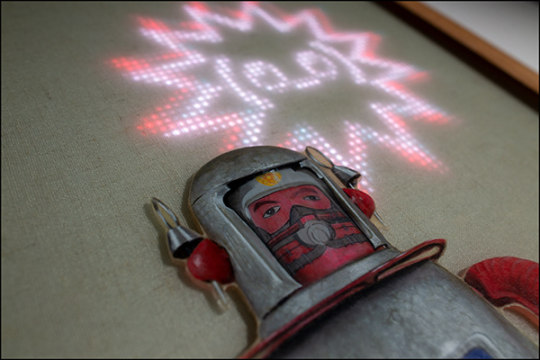
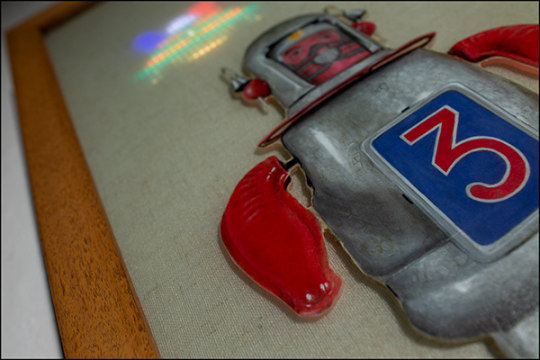

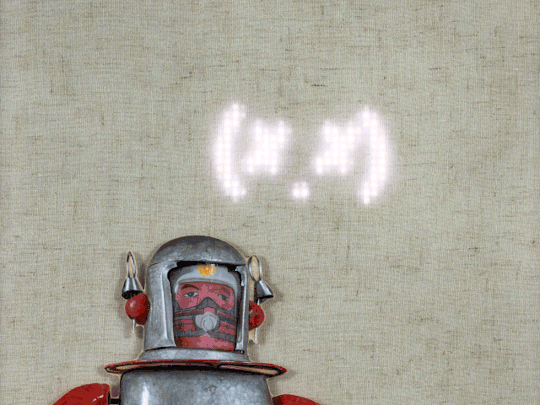
Enrico Fermi famously suggested in what is now known as “The Fermi Paradox” that we really should’ve been visited by extraterrestrials by now. The general idea of it is this: where the hell is everybody? There’s so much out there and everything is so old that probability would suggest a visit or two ought have graced up. Well maybe, maybe not. There are three logical explanations (aside from the obvious ones that they already have visited, or that aliens don’t exist, and never have). The first is that they accidentally blew themselves up while learning to make weapons. Any advanced civilization will, at some point, figure out how to split an atom. Where and why they decide to split one though is totally up to them. The second is that their civilization already ran its course and eventually died off long before we were around to notice. Maybe they ruled the universe for millions of years…three billion years ago. The third option… they see us, they’ve been watching us, and it is only a matter of time before they strike. Let’s hope it’s not the third.
Unique
46*65cm
Art for sale : [email protected]
https://island6.org/fermiforthefighter
#enrico fermi#shanghai#island6#m50#aliens#possibilities#newmediaart#imagination#ledart#flyingsaucer#cutepainting#contemporaryart#artandtechnology#homedecor#liudao#artforsalebyartist
4 notes
·
View notes